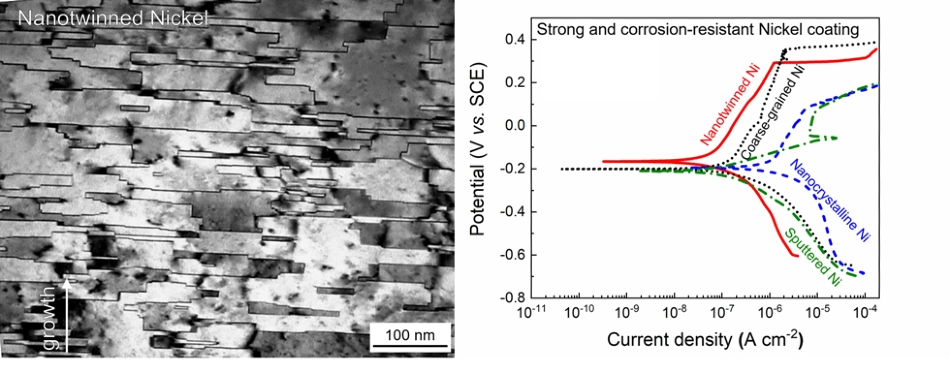Nickel is a metal that is extensively utilized in the manufacturing sector for both sophisticated and industrial material processes.

Researchers at Purdue University have developed a new hybrid approach to create an entirely different kind of nickel that shows promise for producing sophisticated devices, lifesaving medical devices, and vehicles that have excellent corrosion-resistant protection, in the days to come.
In the latest method developed by the Purdue team, a process is used in which high-yield electrodeposition is applied to certain conductive substrates. The researchers’ work appeared in the December edition of Nanoscale.
For manufacturers, one of the greatest difficulties with nickel is tackling the places inside the metals where the overlapping occurs in the crystalline grains—a phenomenon referred to as the boundary areas. Such traditional grain boundaries can reinforce metals to meet the demand for high strength.
But grain boundaries usually behave as stress concentrators and are sensitive areas for corrosion attack and electron scattering. Consequently, traditional grain boundaries usually decrease electrical conductivity, corrosion resistance, and ductility.
Twin boundary is another specific kind of boundary, which is relatively less common in nickel and other similar metals because of its high-stacking fault energy. The special nickel, which exists in a single-crystal-like form, contains only a few traditional grain boundaries but it also features a high-density ultrafine twin structure.
The Purdue team has demonstrated that this specific nickel enhances corrosion resistance and promotes ductility and strength. Properties such as these are crucial for manufacturers across a wide range of industries, such as oil, gas, automotive, and micro-electro-mechanical systems (MEMS).
We developed a hybrid technique to create nickel coatings with twin boundaries that are strong and corrosion-resistant. We want our work to inspire others to invent new materials with fresh minds.
Xinghang Zhang, Professor of Materials Engineering, College of Engineering, Purdue University
The solution proposed by the Purdue team is to utilize a single crystal substrate as a growth template along with an engineered electrochemical recipe to prevent the formation of traditional grain boundaries and encourage the formation of twin boundaries.
A high mechanical strength is subsequently contributed by the high-density twin boundaries and this strength surpasses 2 GPa, a high polarization resistance of 516 kΩ, and a low corrosion current density of 6.91 × 10−8 A cm−2.
Our technology enables the manufacturing of nanotwinned nickel coatings with high-density twin boundaries and few conventional grain boundaries, which leads to superb mechanical, electrical properties and high corrosive resistance, suggesting good durability for applications at extreme environments.
Qiang Li, Research Fellow, Materials Engineering, College of Engineering, Purdue University
Li continued, “Template and specific electrochemical recipes suggest new paths for boundary engineering and the hybrid technique can be potentially adopted for large-scale industrial productions.”
Li is also a member of the research group.
The Purdue technology offers promising applications in the automotive and semiconductor sectors, where metallic materials with superior mechanical and electric properties are required for manufacturing purposes. The new nanotwinned nickel can be used as corrosion-resistant coatings in the oil, gas, and automobile sectors.
After meticulous engineering designs, the novel nickel hybrid method can possibly be incorporated into the MEMS sector. Critical care departments and other hospital settings make use of MEMS medical devices for patient monitoring.
In related pressure sensors and other functional microscopic-scale parts in MEMS, materials with excellent chemical reliability and superior structural and mechanical stability need to be used.
The scientists patented the technology by working with the Purdue Research Foundation Office of Technology Commercialization. They are currently seeking partners.
The study was supported by the Department of Energy’s Basic Energy Science program. The scientists at Purdue University worked with researchers from Sandia National Laboratories on the novel technology.
Source: https://www.purdue.edu/
"mechanical" - Google News
January 30, 2020 at 11:55PM
https://ift.tt/2tg51NG
New Technique Helps Create Nickel with High Mechanical Strength - AZoM
"mechanical" - Google News
https://ift.tt/36eZe8V
Shoes Man Tutorial
Pos News Update
Meme Update
Korean Entertainment News
Japan News Update
0 Comments:
Post a Comment